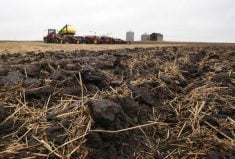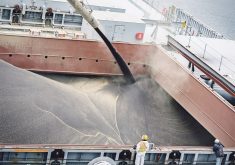There are signs that the significant slump in crop and hog markets since mid-January may have ended.
However, analysts are divided as to whether this is a long-term bottom or just a pause on the way to the real bottom.
“Fundamentally, there’s not much behind this,” said Joe Victor of market analysis firm Allendale Inc. in McHenry, Illinois, on Feb. 8 as the market staged its best gains of 2010.
“It’s a technical rally, more short covering than anything else.
Read Also

Short rapeseed crop may put China in a bind
Industry thinks China’s rapeseed crop is way smaller than the official government estimate. The country’s canola imports will also be down, so there will be a lot of unmet demand.
“But we believe we have seen the winter lows and now we will start working higher.”
Errol Anderson of the Pro Market Wire report, on the other hand, believes the winter’s lows have not necessarily been reached.
“I think it really could go down,” said Anderson, anticipating a double dip recession.
“I’m not convinced we’re into any recovery.”
The recent setback in crop prices has been dramatic, wiping out all the gains from the October to January rally in many commodities.
Canola March futures began October at $380 per tonne, rose steadily to $420 in late 2009 and then began a couple of slumps that have taken it back down to the $380 harvest lows.
Wheat began its post-harvest rally early in September at $5 US per bushel on the Minneapolis March contract, rose to $6, fell back and then joined in the December rally before cracking in mid-January. It is now back at $5.
Hog prices are similar, although much of the rally’s rise has been maintained.
Chicago April lean hog futures fell in January from a peak of $74 per hundredweight to about $66, but that’s still well above September’s trough of $54.
It wasn’t just agricultural commodities that enjoyed an autumn rally: copper, crude oil and commodity currencies all rallied, and almost simultaneously turned down in January.
The U. S. Department of Agriculture shocked the market Jan. 12 with findings of much extra corn in stock, but Victor and Anderson agreed this was just a trigger that fired the gun loaded by excessive optimism about world demand.
“It was going to happen anyway,” said Anderson, noting much of the euphoria over the apparent economic recovery is being replaced by anxiety over the global debt and default situation. Threats to supply or demand assumptions have a big effect in that atmosphere of growing unease.
The biggest trigger for the cross-commodity slump was China’s announcement that it planned to tighten credit, kicking the legs out from under the optimism that had propped up all commodity markets.
“When China announced that, it was the blow that knocked these markets off because everybody was counting on China to be the demand button,” Anderson said.
Victor said he thinks the bottom has been reached because commercial buying moved in when prices recently fell, supporting the market. That means demand is still there, even if it is weaker than hoped.
Soon the pre-seeding fight for acres will begin, and prices will crawl higher.
Anderson thinks demand will shrivel as the world’s economies fall into another economic trough.
“This is illustrating the weakness in global economies,” Anderson said about the failure of the autumn rally.
“Nothing really has been fixed.”















